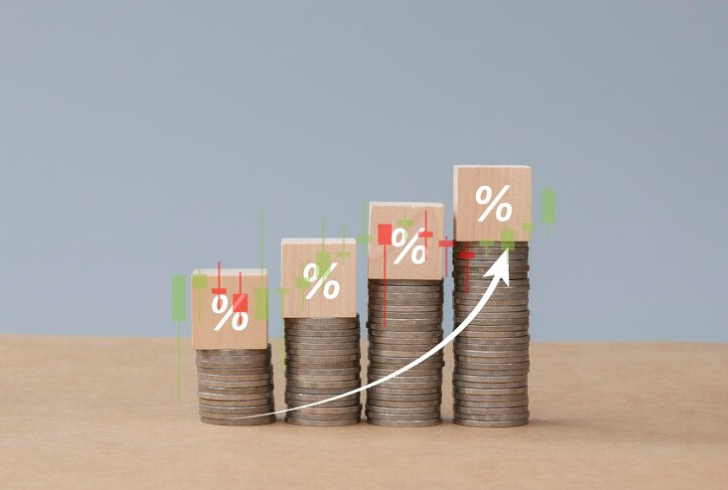Understanding the nuts and bolts of how your money grows in a bank account can feel like navigating a maze, especially when terms like APY and interest rate pop up, which might seem similar at a glance but hold distinct differences crucial for your financial growth.
This guide aims to break down these terms, focusing on APY vs interest rate in a manner that’s easy to grasp for everyone. Whether you're a savings veteran or opening your first account, knowing these differences is key to maximizing your returns.
Understanding the Basics - APY vs Interest Rate
Before diving into the complex world of financial growth, it’s essential to get familiar with the main characters of our story: APY and interest rate. Both are about how your money increases over time but in different ways due to the magic of compound interest.

Freepik | family31 | The annual percentage yield (APY) is the total amount of interest you earn on an account in a year.
The Core Difference
In the simplest terms, the annual percentage yield (APY) is the total amount of interest you earn on an account in a year, taking into account the effect of compounding. On the flip side, the interest rate refers to the percentage at which your initial deposit grows without the magic of compounding. This distinction is crucial in the comparison of APY vs Interest Rate.
The main protagonist of our story, compound interest, is what differentiates APY from interest rate. APY provides a more comprehensive overview by including interest earned not only on your original deposit but also on the accumulated interest over time.
Meanwhile, the interest rate maintains a simpler narrative, focusing on the interest calculated on your initial deposit. This differentiation underscores the importance of understanding both concepts in managing your finances.
Why APY Shines Brighter
When you're eyeing the growth of your savings account, APY is your go-to metric. Banks might showcase both APY and the corresponding interest rate, but APY steals the show by offering a more accurate forecast of your annual earnings, thanks to its inclusion of compound interest.
A Real-World Comparison

Freepik | If the bank switches to monthly interest payments instead of yearly, your balance gets a significant boost.
Let’s put this into perspective with a relatable scenario:
Imagine you’ve saved $10,000 at a bank offering a 4.17% interest rate, calculated at the year’s end without compounding. Simple math tells you you'll earn $417 in interest.
Now, let’s say the bank starts paying interest monthly, not yearly. This small change boosts your balance each month due to compounding, leading to more than $10,417 by year’s end. In fact, with monthly compounding, your savings could grow to around $10,425, reflecting an APY of about 4.25%.
Frequently Asked Questions
What’s the Clear-cut Difference?
The stark difference when it comes to APY vs interest rate lies in compound interest. APY is the more comprehensive measure, including both the interest on your initial deposit and the interest on interest, whereas the interest rate is a simpler calculation, not factoring in compounding.
Why Does APY Often Tower Over Interest Rate?

Freepik | When growing your savings, knowing APY vs. interest rate goes beyond financial terms.
Because it accounts for the snowball effect of compounding, APY wins the APY vs interest rate savings race. This means you earn interest not only on your original deposit but also on the accumulated interest over time.
Wrapping It Up
In the journey of growing your savings, understanding the distinction between APY and interest rate is more than financial jargon—it's about making informed decisions that optimize your earnings.
Think of APY as your financial compass, guiding you through the sea of savings accounts and investment options, ensuring you reap the benefits of every cent saved. With this knowledge, you're now equipped to navigate the world of finance with confidence, making the most out of your hard-earned money.
